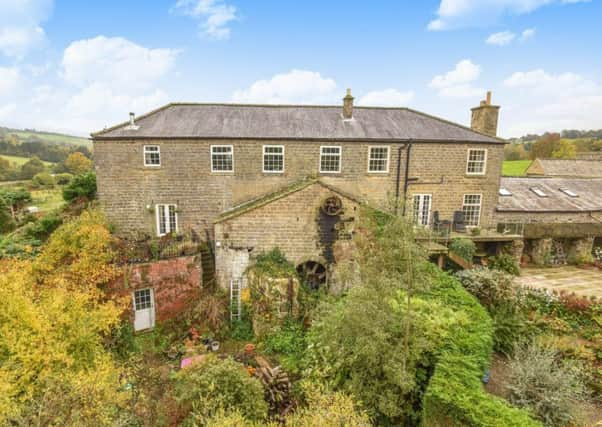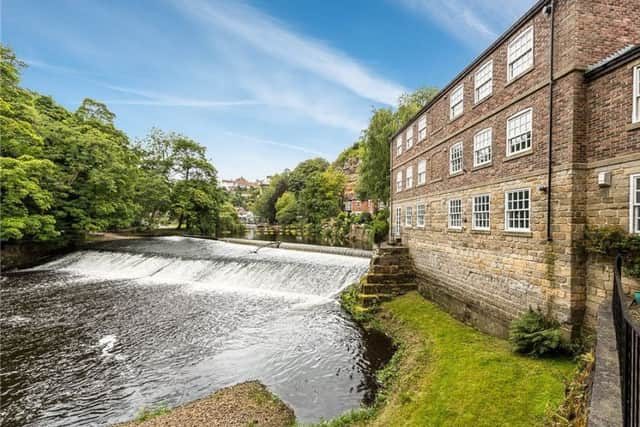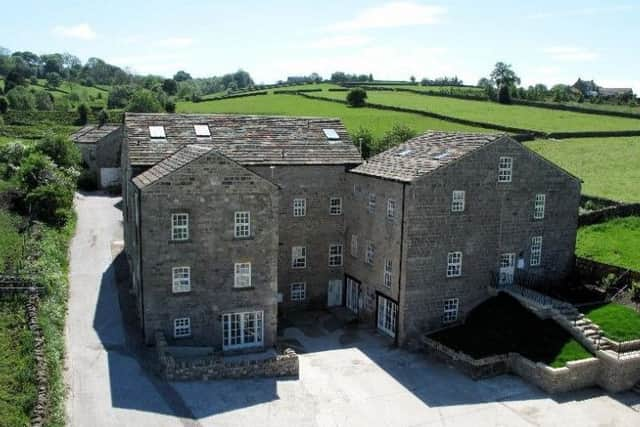Making a mill of it: the charm of a ?historic home down by the waterside


They come in all sorts of sizes and styles, depending on whether they were cornmills, flax mills, sawmills or textile mills. They can be large and detached or small and part of a huge industrial unit.
Water-powered mills have existed since at least Roman times, and at the time of the Domesday survey in 1086 there were 5,624 mills in England – roughly one for every 300 people – including ones at Ripon, Spofforth and Wilsill (between Low Laithe and Glasshouses). By 1300, there were about 17,000 of them.


Advertisement
Hide AdAdvertisement
Hide AdWith industrialisation, many of the old-style mills were made redundant and replaced with large new mills that could employ hundreds, but in time these too were replaced by mains-powered equivalents.
So it’s a happy irony that many old mills are now being fitted with hydroelectric turbines to harness the power of the millstreams once again, often enabling the owners to sell electricity back to the grid.
None of the following three properties has a mini power station installed, but the possibility might exist for the two larger homes.
Whether it ends up being feasible or not, these properties all benefit from an interesting history and a waterside location.


Advertisement
Hide AdAdvertisement
Hide AdThe Wheelhouse is described by the agent as “the jewel of an imaginative conversion reviving the former mill of Darley”. Set over four floors, it has beautiful far-reaching views of the Nidderdale countryside from the upper rooms and a very large lower-ground/basement level, which houses some of the original mill mechanism (think ‘cogs and gears’), but which could be used for a multitude of purposes.
There are five bedrooms, three bathrooms and a large lounge and to the back is an enclosed courtyard, lawned garden and pond, as well as two allocated parking spaces and ample visitor parking.
Also in Nidderdale, Rolling Mill at Pateley Bridge was built around 200 years ago and was used to process local Greenhow lead into lead sheet and piping. It finally closed in 1966.
The semi-detached property now has solar panels (which yield an annual income), but could do with some further modernisation and refurbishment.
Advertisement
Hide AdAdvertisement
Hide AdIt has five bedrooms, two bathrooms and two reception rooms, one of which has a window looking into the waterwheel, which is still in place.
Outside, there are 0.6 acres of gardens, with greenhouse, ponds, orchard and riverbank, plus plenty of off-street parking.
Finally, 11 Castle Mills on Waterside in Knaresborough is a two-bedroom second-floor apartment in a Grade II-listed converted flax mill.
Built in 1764, Castle Mills produced fine linen from 1770 to 1972 and was granted the royal warrant by Queen Victoria as supplier to all the royal palaces. It was even sketched by JMW Turner in 1797.
Advertisement
Hide AdAdvertisement
Hide AdThe property, which also has access to communal gardens, is in a stunning location at the foot of the cliff on which Knaresborough’s castle stands, and it comes with beautiful views over the River Nidd.